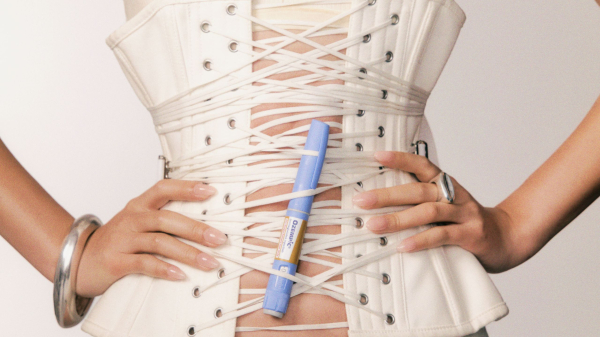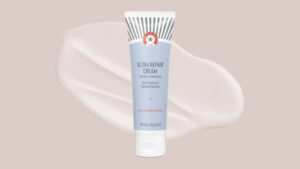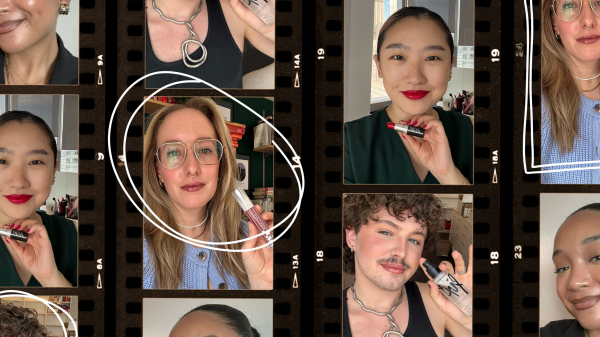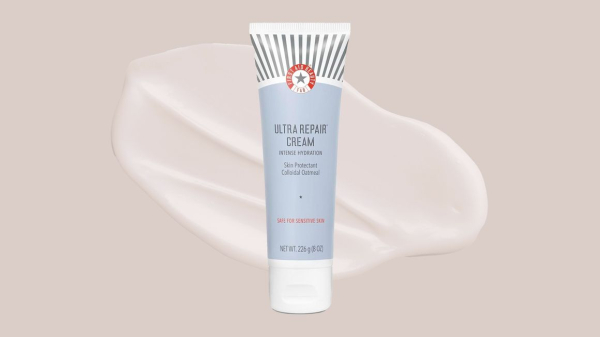 Huy LuongSave this storySave this story
Huy LuongSave this storySave this story
It all started with “Ozempic face.” This was, for most, our first exposure to the underbelly of GLP-1 medications—the unforeseen cost of a suddenly slimmer figure. Alluding to the deflation and sagging that can accompany rapid weight loss, the term first penetrated the zeitgeist (or at least our Google search bars) in January 2023 when The New York Times announced: “Those Weight Loss Drugs May Do a Number on Your Face.” The next spike in curiosity about the phrase came three months later, coinciding directly with a Hollywood Reporter piece on the rise of a related phenomenon: “Ozempic body.” As the medications melted away fat, people were confronting flaccid skin that no longer fit their frames.
While GLP-1s are lauded for their myriad health benefits—metabolic, cardiovascular, neurological, psychological—the media buzz not only alerted the public to the drugs’ cosmetic side effects, but signaled a seismic event: Ozempic’s entrée into the world of plastic surgery. (I’m using “Ozempic” here as a catchall for GLP-1s, which now fall under several brand names, including Wegovy and Mounjaro.) As people started looking for ways to get rid of the excess skin, surgical body-contouring procedures became more popular, with liposuction, butt lifts, arm lifts, and thigh lifts having the greatest growth, according to the American Society of Plastic Surgeons (ASPS). For a subset of plastic surgeons, the GLP-1/aesthetics crossover moment also included prescribing semaglutide (the active ingredient in Ozempic and Wegovy) to select patients before body-contouring procedures, like tummy tucks, to help them reach a safe weight for surgery (higher BMIs are associated with a greater risk of complications) and to shrink the visceral fat in their abdomens, allowing for a more dramatic cinching of waistlines.
As more powerful GLP-1s, like tirzepatide (a.k.a. Mounjaro/Zepbound), hit the market and the drugs became more accessible, people began losing more weight faster than ever before—and the demand for tissue-tailoring lifts and tucks soared. GLP-1s became a catalyst for a host of cosmetic procedures that people never wanted or anticipated needing. Even now, “the rapidness of the weight loss catches some people off guard,” says Amaka Nwubah, MD, a board-certified plastic surgeon in Brentwood, Tennessee. “No one warned them, ‘Hey, you’re going to have all this loose, hanging skin afterwards.’” In extreme cases, she adds, “they almost feel a little bit deformed because of the skin.”
With next-generation GLP-1s, like an oral version of Wegovy and injectable retatrutide, poised to launch as early as 2026, “body-contouring procedures will continue to skyrocket,” says Darren Smith, MD, a board-certified plastic surgeon in New York City. More potent than its predecessors, retatrutide activates three receptors—GLP-1, GIP, and glucagon—as opposed to only one (as is the case with semaglutide) or two (like tirzepatide).
“All three receptors are responsible for controlling hunger, satiety, and metabolism, but the glucagon additionally promotes fat burning,” ramping up results, explains Caroline Messer, MD, a board-certified endocrinologist in New York City. “In the clinical trial [for retatrutide], people were losing about 25% of their body weight after 48 weeks.”
“The rapidness of the weight loss catches some people off guard. No one warned them, ‘Hey, you’re going to have all this loose, hanging skin.’”
Based on real-world experience with this class of medications, Dr. Messer says, “the amount of weight loss we’ll see clinically with retatrutide will probably exceed what researchers saw in the trial.” Some doctors tell me they expect the drug to outperform even bariatric surgery, leading to more weight loss in less time. (Bariatric procedures, like sleeve gastrectomy and gastric bypass, alter the digestive system in various ways, restricting food intake, suppressing appetite, and/or limiting nutrient absorption. According to one study, “a successful outcome of bariatric surgery is one that achieves a loss of 50–70% of excess weight or the 20–30% loss of the patient’s initial weight.”)
The cosmetic fallout of GLP-1s isn’t limited to those injecting (and, soon, swallowing) in the name of weight loss. As the indications for these medications broaden, so too does the patient population seeking plastic surgery. “There are a bunch of trials looking at GLP-1s for opioid addiction, for smoking, for alcohol,” says Dr. Messer, and doctors are already prescribing them off-label for these purposes. “I find that most of my patients [using GLP-1s for addiction] require higher doses to really raise up their dopamine enough that they’re not having to use their addiction to spike the dopamine,” she says. (GLP-1s are thought to curb cravings by targeting the brain’s reward pathway, which involves the release of dopamine.) So in these patients, too, weight loss is likely and they could also contend with the unwanted aesthetic effects of Ozempic.
Even today, with still limited indications for GLP-1 use, one in eight Americans say they’ve taken a GLP-1. According to new research from Guidepoint Qsight, 60% of US med spas and 35% of aesthetic physician offices prescribe the medications. Umbareen Mahmood, MD, a board-certified plastic surgeon in New York City, says she’s now even encountering men and women with already-low BMIs who are using the drugs “to lose a few pounds for a big event or beach vacation.” Surprisingly, “many of these patients are still seeing negative aesthetic side effects, likely due to how rapid the weight loss was—those who lose weight gradually tend to have better tissue elasticity and skin retraction—and also because their margin for loss is smaller given that they were already at a healthy weight for their body.” (When someone’s BMI is low to start, she explains, “losing a few pounds can have a significant impact on the little bit of fat you have.”)
Jerry Chidester, MD, a board-certified plastic surgeon in Draper, Utah, tells me that close to half of his patients are currently using a GLP-1 or have in the past. Daniel J. Gould, MD, PhD, a board-certified plastic surgeon in Beverly Hills, puts the number in his practice at 60%. “Only about 10% are extremely high-weight-loss patients, having lost 80 to 100 pounds or more,” he says. “They have a tremendous amount of excess skin, requiring multiple [skin-removal] surgeries.” But the 50% losing far less weight—more like 20 to 30 pounds—still have skin laxity and volume changes in their faces, breasts, and bodies. So it’s no wonder surgeons are innovating quickly to make their body-contouring techniques more seamless for Ozempic patients, employing new techniques and strategies both in and out of the OR for less obvious scars and better healing.
As body lifts become big business, scars are getting smaller.
When it comes to body contouring, lifts for removing excess tissue traditionally involve lengthy incisions—like the classic armpit-to-elbow cut of a conventional arm lift or the hip-to-hip slice of a tummy tuck—and wherever a surgeon makes an incision, there will be a scar, which surgeons aim to hide with strategic positioning. Since patients are generally more willing to accept that trade-off following massive weight loss versus, say, a 20-pound change, surgeons are engineering new lift techniques for people who have lost smaller amounts of weight rapidly on GLP-1s.
For patients with minimal loose skin, Dr. Smith has developed short-scar protocols, which combine less invasive lifts and tucks with energy-based skin tightening. A mini arm lift, for instance, requires a small horizontal incision only in the armpit. To address “just a little laxity in the upper thighs,” he can hide the scar in the groin crease rather than extending it down to the knee.
Along with smaller scars, these operations can offer a faster recovery than their traditional counterparts. The key to getting good results with these modified surgeries is internal radiofrequency energy (in this case, BodyTite), Dr. Smith says, which aims to “heat the tissues and upregulate collagen and elastin” to shrink the skin. These energy-based procedures, which involve inserting a radiofrequency-charged cannula under the skin to heat it from within, are performed directly following the lift or tuck, during the same surgery.
But if skin-tightening devices are a critical part of shorter-scar lifts, that could be problematic for the patients who need them most. “These devices predicate on the fact that the patient has good collagen and connective tissues that you can tighten with that energy and that their healing response will be robust enough to trigger the desired tightening,” says Dr. Gould. “I think it’s less likely for energy to be effective in patients who are on these medications, because they often don’t have quality tissues on their side.”
“Patients who are on these medication often don’t have quality skin tissues on their side.”
While Dr. Smith acknowledges that “collagen and elastin production seems to be down in GLP-1 patients,” he says he’s had “great success treating properly selected patients” with this one-two punch of radiofrequency and surgery. “There's really no data either way on this issue of GLP-1s affecting the efficacy of minimally invasive skin-tightening devices,” he notes.
Dr. Chidester, who frequently uses radiofrequency-based Renuvion in body-contouring surgery, says that, in his experience, it does work in certain areas, on select GLP-1 patients, with one exception: “Stretch-marked skin does not do well with any of these energy devices—it just doesn't tighten.” And in GLP-1 patients, “we’re seeing so many stretch marks,” says Ashley Gordon, MD, a board-certified plastic surgeon in Austin. “The fascia [connective tissue] isn’t as strong, and the skin is dehydrated. Everything just feels different.”
To Dr. Nwubah, the difference is most striking in the breasts. Whether she’s placing an implant or tailoring the breasts during a lift, “it’s amazing how much that skin is just pulling and stretching,” she says. “It’s almost never-ending.” (The phenomenon of GLP-1s seemingly changing people’s skin is something Allure first reported on last summer.)
Still, doctors generally agree that there’s little hard evidence—as in, biopsy studies examining skin structure and function before and after GLP-1 use—proving that these medications truly alter the tissues at a molecular level. “At this point, it’s mostly anecdotal reports and case series,” says Dr. Gould. But there is some early experimental evidence, he adds, showing that GLP-1s can change the behavior of stem cells in fat and shut down aspects of signaling between fat and skin that may affect collagen regulation and wound healing. While these GLP-1 consequences are “biologically plausible,” Dr. Gould notes, they haven’t been fully demonstrated “in human tissue or large-scale trials.” What’s more, it can be hard to tease out the influence of GLP-1s from that of age and hormones, which can similarly undermine our tissues.
Collagen-building regimens are a must for some patients.
Wound healing has become more than a theoretical concern for GLP-1 patients, with surgeons increasingly reporting post-op complications, because of nutritional deficiencies in Ozempic patients and the way these can compromise wound healing and collagen in the skin. “The skin heals differently,” Dr. Gould says. It’s not unusual to see delayed wound healing and unpredictable scarring. Ordinarily, in someone who has not lost weight on Ozempic-type drugs, “if there’s a complication [related to healing] after surgery, we see it as early as week two, and we tend to see good healing between weeks four and six.” But for GLP-1 patients, incisions will sometimes reopen in spots. Doctors call it wound dehiscence—“the edges kind of fall apart,” he continues. If this occurs, it’s usually later than normal, around four weeks post-op—which is precisely the time external stitches are starting to dissolve. Typically, says Dr. Gould, “the body is healed enough where it can take over [for the sutures], but if it’s not, then there’s a problem.”
These types of wounds not only present on the later side, they also take longer to resolve. “I just did a circumferential body lift on a GLP-1 patient, and along her back, in the area right above her gluteal cleft [the groove between the buttocks], the incision opened up and it probably took two months for it to heal,” says Dr. Gordon. In such cases, the wound is usually left open to “heal by secondary intent,” she says—without the benefit of sutures—which generally means that part of “the scar is going to end up being wider and thicker.”
“Poor nutrition can lead to delayed wound healing and hypertrophic scars.”
A retrospective review published this year in the Aesthetic Surgery Journal compares the body-contouring outcomes of nondiabetic patients who used semaglutide for at least six months before surgery to those of patients who did not use semaglutide before surgery. It found higher rates of wound dehiscence, delayed healing, surgical site infections, and hypertrophic (raised) scarring in the GLP-1 group. Paradoxically, a separate study published in the same journal, around the same time, analyzed body-contouring outcomes in GLP-1 patients, and did not find an increased rate of post-op complications. (The former study included a broad range of procedures with disparate complication rates, while the latter looked at only four procedures with similar complication rates. This may explain the conflicting outcomes.)
Not every Ozempic user has hiccups during recovery. In fact, “sometimes in weight loss patients, the scars will actually turn out a little better [than average],” says Dr. Gordon, which could also be due to diminished collagen in the skin. She likens the event to scarring in older patients versus younger ones, who make thicker scars due to their more robust healing response. “When GLP-1 patients avoid healing complications, their scars can end up being really nice,” she says.
And when problems do occur, “I don't think it's the drug itself causing issues with healing,” says Dr. Chidester. “I think it’s because patients are malnourished—they don't have an appetite, they lack protein and nutrition—and their bodies [don’t have what they need] to build scar tissue and heal properly.”
When Dr. Gould began screening GLP-1 patients for vitamin deficiencies before surgery, he found that almost all had “pretty severe” D and K deficiencies. Vitamin D is critical for healing and collagen synthesis and vitamin K regulates blood clotting (those who lack it are more likely to bleed after surgery). “I’ve been speaking about this at meetings,” he says. “Surgeons need to start routinely measuring fat-soluble vitamins A, D, E, and K in weight-loss patients, because when they lose fat, they lose these vitamins. And we know poor nutrition can lead to delayed wound healing, wound dehiscence, and hypertrophic scars.”
Dr. Messer’s take aligns with that of the surgeons I interviewed: “Higher rates of surgical wound reopening and delayed healing [in GLP-1 patients] may be linked to the drug’s impact on gastrointestinal motility [the way food, liquid, and waste move through the stomach] and nutrient absorption, potentially leading to nutritional deficiencies that impair wound healing,” says the endocrinologist. She links increased infection rates to the drug's tempering effect on immune function.
“Collagen and elastin production seems to be down in GLP-1 patients.”
Dr. Chidester has set out to make these issues a thing of the past by asking patients to pause GLP-1s for six weeks before and six weeks after surgery to bolster nutrition. And his clinic now employs a medical weight-loss expert, a fitness coach, and a nutritionist to help patients hit their goal weight and maintain it for at least six months before surgery. (The GLP-1 hiatus is designed to help avoid anesthesia-related complications as well as improve wound healing, he says.) Six weeks prior to surgery, patients also up their protein intake and enhance their diets. At one month out, Dr. Chidester’s team runs labs to ensure iron and vitamin levels are where they need to be. (If patients are microdosing Ozempic for health reasons not related to weight loss, like for the anti-inflammatory or cognitive benefits, their timetable may look a little different.) Every surgeon has their own approach to weaning patients off of GLP-1s before surgery—some require only a three-week pause—so always follow your doctor’s orders.
Preparing GLP-1 patients for surgery involves nourishing the skin inside and out, so surgeons might also recommend a pre-op wellness or skin-care routine. Since taking a GLP-1 can “create a low protein and micronutrient intake, affecting zinc, vitamin C, iron, B vitamins, and all the fat-soluble vitamins critical in collagen synthesis and skin turnover,” says Dr. Gould, he often provides HealFast or Juven supplements in the weeks leading up to surgery. These formulas are designed specifically for surgery prep, “and have been clinically shown to improve the outcomes of healing,” he adds.
For overall wellness, Dr. Messer recommends GLP-1 users shoot for 60 to 75 grams of protein a day (roughly one to one-and-a-half grams per kilogram of body weight), two to three strength-training sessions per week, and at least one or two cardiovascular workouts. (Exercise should always be cleared with plastic surgeons following procedures.)
Several of the surgeons I spoke to include the peptide-rich Alastin Reform & Repair Complex in their pre-op protocols, having patients apply the serum to treatment areas, twice daily, starting at least six weeks before surgery. Published studies on the formula’s proprietary TriHex complex show improved wound healing and hydration as well as increases in collagen and elastin. While the trials are company-sponsored, doctors say the rigor and results of the research are still impressive. “Anecdotally, I’ve seen [the product] make a difference, especially in my breast augmentation, liposuction, tummy tuck, and post-weight-loss patients,” says Dr. Chidester. “When patients use it consistently before surgery, they tend to bruise less, heal more smoothly, and their scars look lighter and more refined—the skin just seems to recover better overall. With GLP-1 patients, it’s still unclear to me if it has the same impact on collagen and elastin production, but I do think it helps support skin quality in a meaningful way.”
Dr. Chidester also uses medical-grade blue, yellow, and red light therapy (called photobiomodulation) from the Elixir MD device before surgery, as well as immediately post-op and for seven to nine days after. “It builds collagen and helps with swelling and scar formation,” he says. The medical literature is replete with studies documenting the healing effects of light therapy on all kinds of wounds, including surgical incisions, burns, and diabetic ulcers.
Surgeons are using better suturing techniques—and a little Botox—for smoother scars.
Imperceptible scars are born of meticulous stitching. “I do a three-layer closure so that the most superficial layer of skin is perfectly aligned and touching,” says Dr. Mahmood. “Tension is a big factor in wound dehiscence and hypertrophic [raised, thick, red] scarring, and this [helps prevent both with] a tension-free closure.” Reconnecting each tissue layer that was cut, from the bottom up, also keeps the skin from sticking down to the fascia and creating tethered scars (like those seen after C-sections).
Doctors are finding other ways to minimize scarring by managing tension on incisions: Many use barbed sutures “that evenly distribute tension throughout the tissue,” says Dr. Smith, to “reduce the prominence of scars.” Dr. Chidester credits his preferred brand, Stratafix, with helping to create “really good, thin scars” after tummy tucks, arm lifts, and thigh lifts.
To account for the possibility of delayed healing in GLP-1 patients, Dr. Gould often uses longer-lasting sutures (called non-barbed polydioxanone, or PDS) that absorb after three months instead of a few weeks like standard sutures, “allowing delicate tissues the time they need to regenerate and strengthen naturally,” he explains, “ultimately leading to better results.” Reinforcing these with an external nylon suture, which stays in for 7 to 10 days, “everts the edges of the incision, so they’re raised up and sitting next to each other,” he says. This way, when the skin stretches during recovery, the wound edges lay flat instead of pulling apart. “That stitch in the arms and thighs, especially, has made a huge difference, creating really beautiful incisions.”
Other surgeons might support stitches with something called Sylke tape, which holds tension off the incision, or with a “tension off-loading” device called Brijjits. These plastic gizmos form a bridge across the incision, rolling up the edges of the wound and giving it the wiggle room needed to withstand the stretch of post-op swelling and movement.
Not every Ozempic user has hiccups during recovery. “Sometimes the scars will actually turn out a little better [than average].”
Using the right combination of materials and techniques—like Sylke, Stratafix, and laser therapy at six weeks—“we can get our scars looking like they’re 18 months old right around four to six months,” says Dr. Chidester.
Sometimes GLP-1 patients are asked to wear a wound vac for about a week post-op. “It’s essentially a sponge that sits on top of the incision and it’s hooked up to a vacuum, which sucks fluid out of the wound to accelerate healing of the edges,” Dr. Gould explains. “It also creates a completely sealed environment where no bacteria is touching the surface of the skin.”
On occasion, doctors might even inject botulinum toxin after suturing if incisions are in areas of especially high tension (on the face, sternum, or near joints), Dr. Gould tells me. While studies haven’t fully elucidated exactly how Botox mitigates scars, he says, it’s thought to work, at least in part, by minimizing movement around incisions to prevent pulling. Botox might also cause the skin to create less scar tissue by “modulating the fibroblasts that create it and tempering the overactivation of myofibroblasts—cells in scar tissue that contract—helping to steer healing toward fine, flat, pliable scars.” This is an off-label use of the drug—and it’s not a go-to for the doctors I interviewed—but studies in the plastic surgery literature show that botulinum toxin injections can help reduce the width of surgical scars and improve their overall appearance.
Post-op instructions may be supercharged for Ozempic patients.
Surgeons have different ways of helping their patients amp up healing post-op, like sending them for hyperbaric oxygen therapy during the first week of recovery. This quells inflammation, speeds the healing of skin flaps (sections of skin that are lifted up and separated from their blood supply during surgery), and boosts fat survival (in cases of fat grafting, where fat is taken from one part of the body and transferred to another). “I require all of my patients to have hyperbaric the day after surgery, because that’s when skin and fat cells are crying out the most for oxygen,” Dr. Gould says. They may repeat sessions throughout the first few weeks of recovery. Daily CO2 masks (a.k.a. topical carboxytherapy), which have been shown to increase oxygen delivery to tissues, can be useful adjuncts to hyperbaric chamber visits.
Massaging on silicone serums or applying silicone tapes at around four to six weeks post-op can also help normalize scar formation. “Silicone strips create a moist barrier to promote hydration,” says Suma Maddox, MD, a board-certified plastic surgeon in New Orleans. “They also off-load tension, and if there’s just enough pressure, they can minimize the vascularity [presence of blood vessels] in the scar, which will reduce redness and itching and regulate collagen production.” Scar massage works by a similar principle, she tells me: “You press deeply in the scar until you see blanching or whiteness—hold and then release. This decreases vascularity and helps soften the scar.”
Practicing strict sun avoidance and protection is also crucial, since UV rays exacerbate scars, turning them pink-purple, Dr. Maddox says. They also cause a breakdown of collagen, which is so critical in the healing process and often lacking in GLP-1 users. If an incision appears dark, doctors may prescribe a bleaching cream to slow and lighten discoloration.
Six weeks is typically the time doctors begin offering laser therapy for scars. Pulsed dye lasers (like the VBeam) take aim at blood vessels to fade redness. Fractional lasers, including CO2 versions, can help flatten raised scars, as can heat-free microneedling tools, like SkinPen. “The data seems to indicate that the earlier the intervention with a scar, the better clinical result we’re going to get,” says Mathew Avram, MD, a board-certified dermatologist in Boston.
Only go to a board-certified plastic surgeon or dermatologist for this kind of treatment, though: Overstimulating the scar, with lasers that are too aggressive, can have the opposite effect, causing it to raise up or grow abnormally into a larger, firmer keloid. “Generally speaking, to prevent a scar from becoming too active, we do less aggressive laser treatments,” says Dr. Avram. With fractional devices, this means tuning settings to lower energy and less density. (Density refers to the percentage of skin being targeted.)
If a scar is thick and lumpy to start, certain medications might help thin it. “We can drop kenalog, an inflammation-reducing steroid, into it after we do the fractional treatment to help thin the scar,” says Dr. Avram. (Fractional lasers fire holes into the skin, creating channels through which medications can penetrate.) He finds this method of laser-assisted drug delivery to be safer and more effective than steroid injections, which can overly thin the skin, even depressing the scar and promoting broken blood vessels. Some doctors take a similar approach with a drug called 5-fluorouracil (5-FU), which subdues collagen-making fibroblast cells “to get a scar to proliferate less,” he adds.
If a patient has a history of keloids, plastic surgeons may recommend superficial radiation therapy (one to three sessions) immediately following surgery. (Dr. Nwubah says, contrary to popular belief, she doesn’t see an increased incidence of keloids in patients of color, specifically.) This targeted type of radiation “doesn’t go deep into the organs,” says Dr. Nwubah. Rather, “it just hits the skin cells to halt the exuberant healing response.” (As an additional prophylactic measure, Dr. Nwubah may inject steroids along the incision, during surgery, just prior to closing.)
Dr. Gould, another proponent of radiation therapy, describes keloid formation as “deranged wound healing.” Given that “a keloid is literally a tumor within the scar,” he says, administering an initial dose of radiation within 24 to 48 hours of surgery is a logical way to “disrupt the series of events that would ultimately lead to a keloid.”
While GLP-1s famously sparked the “Ozempic body” craze and the surgical boom that followed, the drugs have also compelled plastic surgeons to fine-tune their techniques and improve their protocols, with the goal of garnering fewer complications and more discreet scars for truly undetectable results.
Photographer: Huy Luong
Stylist: Roberto Johnson
Hair: Jerome Cultrera
Makeup: Nolan Eakin
Manicure: Leanne Woodley
Prop Styling: Manuel Norena
Model: Kaimin Hu
Read more about plastic surgery and GLP-1s:
- These Will Be the Biggest Plastic Surgery Trends of 2025
- Ozempic Is Changing People’s Skin, Say Plastic Surgeons
- 17 People Get Real About Their Mommy Makeovers








